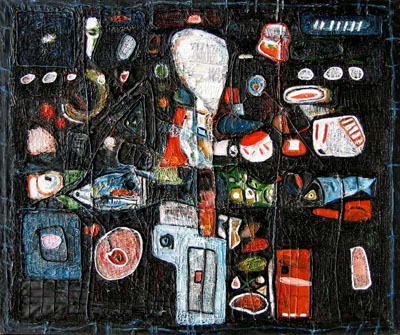| Jul/Aug 2010 • Salon |
| Jul/Aug 2010 • Salon |

Nothing is identical to anything else. Only the individual exists. The very words I use to make these assertions, the adjective "identical" and the common noun "individual," are intellectual constructs, useful but artificial.
Children recognize, or at least assume, the uniqueness of everything. When they see a car of the same make, model and color as their parents', they say "daddy's car," expressing not their inability to form a generalization about types of automobiles but the plain fact before their eyes. It is we older people who make the mistake of believing that categories of objects are real, that because some cars, dogs, and widgets look exactly like some others, they are identical, the same. The convenience of general ideas progressively seduces us, first through language itself, then out of their own sheer utility, until we unthinkingly accept them as real as we do the air around us—though they no more faithfully describe that reality than "H2O" does the taste of water.
Art is a corrective to our misguided faith in the truth of the generalization. In art, good art, only the individual exists. Prince Hamlet and Jay Gatsby may be universal types, but they would be long forgotten if they did not continue to live for the reader as individuals as unique as that reader's own brother or spouse. This uniqueness is what makes them endure despite what academic and other rational analyses make of them.
Art thrives on the concrete and the individual. All artists are trying to crawl back through the Proustian tunnel to recapture the young child's way of experiencing the world, not out of nostalgia but out of a sense that there, and only there, in a world of unique, all-but-inexpressibly precious uniqueness, the real world lies.
Without generalization, the "common noun," we would have an infinite proliferation of individual names. We would remain stuck in an earlier, less articulate version of ourselves, functional but without the benefits of verbalized logical thought. But the artifice of generalization leads us to rational conclusions that promote mistaken notions of commonality and encourage prejudgment. We don't need language to reject or kill our own kind, but the same ability to generate the word "kind" allows us to distinguish and alienate people we mistakenly but logically designate by the common noun "other," not us.
Numbers are the greatest generalizers and nowadays the biggest mischief makers. Numbers lie. They do so by equating what is inherently different. They tell us two spoons, two voters, two spouses, are, for the purposes of counting and calculating, interchangeable. Numbers lie by identifying and equating groups of things and persons with other groups of things and persons. The slaughter of two thousand, or two, is not as heinous as the slaughter of two million. Numbers by their nature invite comparison, and comparison invites judgment, by tricking us into thinking that what is not identical but can be computed as such is equal qualitatively as well as quantitatively.
This is the same sleight of hand—again, indispensable for rational thought—worked by the general idea. By designating otherwise discrete individuals as members of a category, we can manipulate them for artificial, useful purposes: apples here, oranges there; six cases of influenza one month, six hundred the following. The mischief comes when the categorization of the individuals involved, or their enumeration, invite conclusions that have no business being made on such bases. We end up arguing whether a million or "only" 800,000 Rwandans were slaughtered. We call what is happening in Darfur a "genocide" because there is an ethnic distinction between perpetrator and victim, while washing our hands of the four or five million who have died in Congo because there are no clear categories to distinguish the killers and rapists from their prey.
We have become the victims of our own cleverness. We have fallen in love, blindly, with numbers and generalizations, as witnesses no less than as perpetrators. The Nazi habit of good record-keeping is of the same mentality by which we calculate their crimes. No one who has lost a mother or a child to the Khmer Rouge or the Janjaweed makes this mistake. They know tragedy is personal and unique. To attempt to calculate or classify is to trivialize, distort and nullify. That's why we open our hearts and our wallets to the suffering of one visible malnourished child but never get around to writing a check for tens of thousands. This is not an indication of cold-heartedness. Just the opposite: We know reality when we see it, and it is always unique and singular.